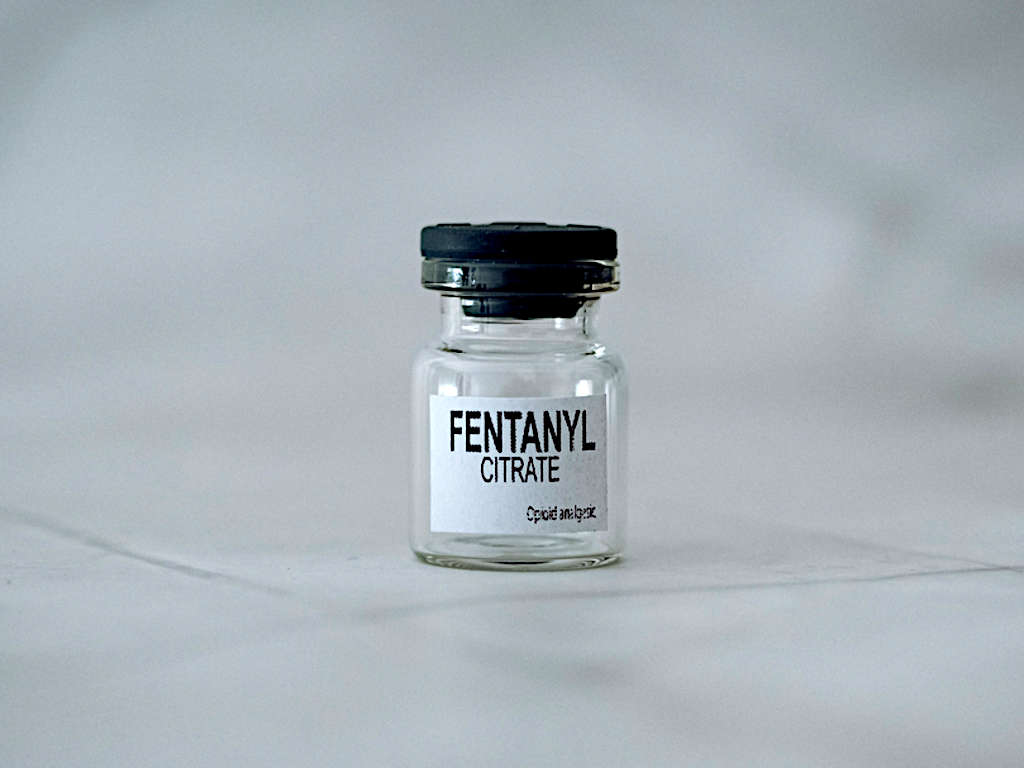Fentanyl is an opioid that is used for treatment of chronic and severe cancer pain, back injuries, surgeries, major trauma, or nerve damage. Fentanyl is a prescription medicine closely monitored by the Drug Enforcement Administration. When not taken as prescribed or procured from an illicit manufacturer fentanyl is renowned for causing overdose deaths.
What is Fentanyl?

Fentanyl is an extremely potent synthetic opioid. According to the Drug Enforcement Administration fentanyl is 80-100 times stronger than morphine. It is a serious risk to use fentanyl without medical oversight. This synthetic opioid can be highly addictive and abused.
Pharmaceutical fentanyl is used to treat pain in cancer patients who have had surgery or for related cancer pain. It is prescribed by doctors or healthcare professionals. You may also use fentanyl for other pain related to nerve damage, major trauma, or a back injury.
Common street names are: Apace, China Town, Great Bear, China White, Dance Fever, China Girl, Goodfellas, He-Man, Poison and Tango & Cash,
Fentanyl works by reacting with opioid receptors in the brain and causing feelings of pleasure, relaxation, pain relief, and contentment.
Fentanyl for Pain Relief, Severe Pain and Chronic Pain
Fentanyl may be available in many forms. Illicit (illegal) fentanyl can be manufactured and used in the illegal drug market. Pharmaceutical fentanyl is a medication prescribed for treating chronic or acute pain.
Fentanyl should be used only to treat breakthrough cancer pain (episodes of pain that occur despite treatment with pain medication) in cancer patients who are at least 18 years of age.
Fentanyl side effects include:
- Drowsiness
- Nausea
- Respiratory depression
- Confusion
- Constipation
- Sedation
- Perceived extreme happiness
- Problems breathing
- Unconsciousness
What are Fentanyl Patches?

Fentanyl transdermal patches are prescribed by doctors as patches to be placed on the body for pain.
How Does Fentanyl Affect the Body?
Fentanyl affects the body like other opiates such as heroin and morphine by binding to your opioid receptors that can be found in the brain. These receptors are found in the part of the brain that controls emotions and pain.
How Long Does Fentanyl Stay in your System?
Fentanyl may be detected on a urine test between 24-72 hours after your last dose. Blood tests can detect it between 5 and 48 hours after use depending on the dose. Hair tests can detect the drug for as long as 3 months.
Long-Term Effects of Fentanyl Use
Regular use of fentanyl may cause:
- Constipation
- Mood instability
- Respiratory impairment
- Menstrual problems
- Reduced libido
Fentanyl Withdrawal Symptoms
Fentanyl withdrawal symptoms usually start within 12 hours after the last dose and can last for about a week.
Symptoms may include:
- Muscle and bone pain
- Severe cravings
- Cold flashes with goose bumps
- Breathing problems
- Sleep problems
- Diarrhea and vomiting
- Uncontrollable leg movements
In severe situations there is a risk for long-term effects of fentanyl that result in death. See a doctor right away if you are experiencing adverse effects related to fentanyl use.
Can you Overdose on Fentanyl?
Yes. Misuse of fentanyl can cause an overdose. Many people who use opioids believe that they are purchasing heroin and do not realize that they are purchasing fentanyl – which often can result in an overdose.
The drug is sold in different forms such as candies, nasal sprays or pills that look like prescription opioids. This makes opioid overdose more common.
If a fentanyl overdose occurs, there is medication available to reverse the effects. The most common medication used is naloxone.
Naloxone
Naloxone is an opioid antagonist medicine that is used to treat an opioid overdose and reverse the adverse effects.
Signs of an Overdose
If you take too high of a dose of fentanyl, you could overdose. Overdose accounts for most opioid related deaths. Get immediate medical help right away if you have any of the following symptoms:
- Slowed breathing
- Chest pain
- Passing out
- Death
- Bluish complexion or lips
- Seizure
- Coma
Additional Opioid Information
Oxycodone
Oxycodone is a synthetic opioid drug that is part of the group of opioid analgesics. It is prescribed for mild to severe pain. It produces effects that are like morphine or heroin and highly addictive.
Heroin
Heroin is a highly addictive drug that is included in the group of opioid analgesics. It is an illegal drug and produces euphoric feelings.
Mixing Fentanyl with Other Drugs
Mixing fentanyl with other drugs can be extremely dangerous. Consult a doctor before mixing fentanyl with any other drugs, including over the counter medications.
Fentanyl + monoamine oxidase inhibitors (MAOI) antidepressants: mixing these drugs can result in serious or severe reactions. MAOI’s are different than SSRI’s. They were the first type of antidepressants developed but have been replaced with safer alternatives that have fewer side effects.
Fentanyl + alcohol: increases the intensity of adverse effects and may increase the risk of respiratory depression.
Fentanyl + benzodiazepines: may result in diminished breathing and intense sedative effects.
Can you Become Addicted to Fentanyl?

Yes, like other drugs, it is possible to develop a substance use disorder when using fentanyl. Like stated above, fentanyl is highly potent and 80-100 times stronger than morphine. Even just one dose of fentanyl can lead to death.
Once your body develops a dependence or tolerance to fentanyl drug use, you will need more of the drug to achieve the same effects. This dependence is often the beginning of drug abuse or an addiction.
Buprenorphine
Buprenorphine is an opioid partial agonist. It produces effects such as euphoria or respiratory depression at low to moderate doses. This drug is often used in the detoxification process.
Addiction Treatment at Turning Point of Tampa
Turning Point of Tampa is a drug and alcohol addiction treatment center in Tampa, Florida. Whether it is a prescription drug such as an opioid, or illicit street drugs, Turning Point of Tampa has recognized drug addiction as a serious yet treatable disease. We can help you recover.
Turning Point of Tampa not only recognizes drug addiction as an ever-increasing problem within this country, but also believes that treatment based within the 12-Step philosophy can lead to a life that is productive, meaningful, and drug-free. Whether you or a loved one are suffering from addiction, we can help.
We are committed to providing high quality, 12-Step based addiction and eating disorder programs that are affordable and effective.
We strive to continually evaluate industry research, as well as our own data, so we can improve and develop the most effective programs available today.
If you or someone you know is looking for help for an addiction, please reach out to our team for more information.


